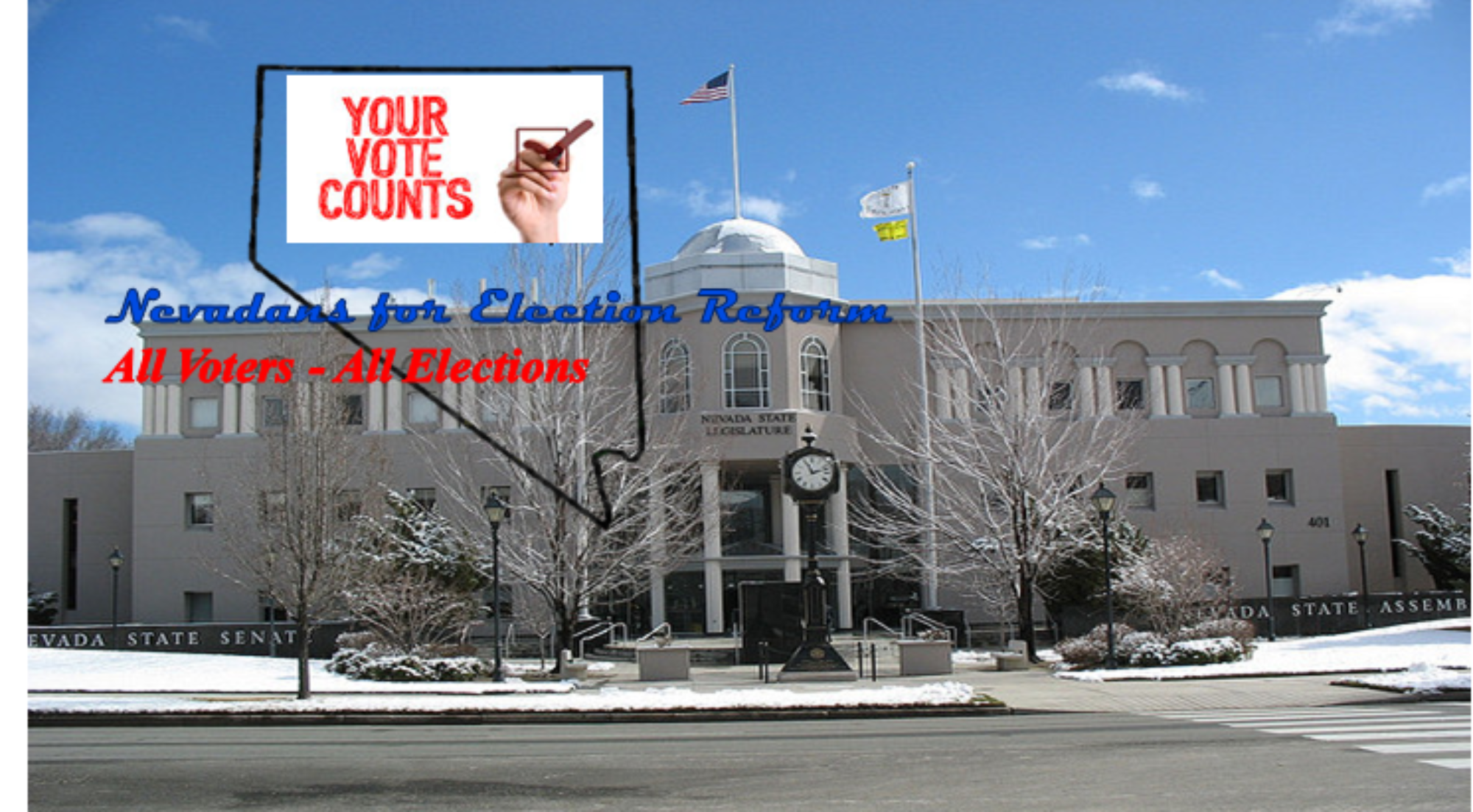Fact: Most voters
do not vote in primary elections. In
Nevada the average turnout for a primary election is approximately 20 percent. Conversely, turnout for general elections in November averages 60 percent in non-presidential election years and 75 percent in presidential election years.
Fact: Voter turnout rates can be at the general election level for all elections. Voters participate in greater numbers in November for several reasons:
- We are conditioned to equate elections with November
- General elections are perceived as more competitive
- Voters consider their votes more important in November
- Candidates and issues are more visible leading up to the November election
- Voter interest is higher for the general election
- Ballot initiatives and referendum normally appear on the general election ballot
Capitalizing on the elements that produce greater voter participation, exploiting them to the advantage of candidates, political parties, and most importantly to voters, will produce elections that result in elected officials who represent the views of a wider range of their constituents. This in turn will lead to more collaborative legislating at all levels of government.
- Increasing voter interest and information
- Not affecting the political parties’ right of association
- Not affecting a political party’s right to select nominees
- Maintaining general election ballot access of minor party and independent candidates
- Eliminating strategic voting; voters changing registration for the primary to vote for the weakest candidate to strengthen the electability of their preferred candidate in another political party
- Saving tax payers $3 – 4 million per election cycle.
NEMRA – 2017 benefits candidates and political parties by:
- Encouraging them to reach out to more voters sooner in the election cycle
- Allowing them to better utilize resources
- Creating a climate where voters who have left the party are enticed to return
The process is simple. Instead of two elections, a low turnout primary and a higher turnout general election, a single election is held in November using a system called Ranked Choice or Instant Run-off Voting (RCV / IRV). As with any general election, all candidates are listed on the ballot and all voters cast their vote.
Run-off elections are typically a second election between two candidates held on a different day than the general election if no candidate received a majority of the votes in the general election. RCV / IRV is a run-off election built in to the general election. It is a method used to count the votes of the general election if no candidate receives a majority of the votes. Voters do not return to the polls on a different day.
Political parties, as private organizations, have the right to determine the number of candidates on the ballot under their party label. NEMRA – 2017 does not change this except for prohibiting the use of public funds for such purpose. Under NEMRA – 2017 party options range from allowing an unlimited number of candidates to selecting specific nominees through a caucus or other election. They may also choose to simply endorse one candidate. Political parties’ right of association is not compromised or violated.
RCV / IRV is simple. Voters mark their ballots for their first choice as they currently do. However, under RCV / IRV, voters also select a second choice, but only if there are more than twice the number of candidates to be elected. Normally this is two. If no candidate receives more 50 percent of first-choice votes, the candidate with the lowest number of first-choice votes is eliminated and the second choice votes of those voters who selected the eliminated candidate as their first choice are awarded to the appropriate remaining candidate. This is the run-off . If there are three candidates this tabulation will happen once as one candidate will end up with a majority. If there are four candidates, there could be a second round of tabulation if no candidate has 50 percent plus one after the first round. Under NEMRA – 2017, if there are more than four candidates, only the top four will advance to the instant run-off tabulation.
Positive results:
- Maximum voter interest and participation
- Winning candidates with a true mandate
- Potentially more in-depth discussion of the issues
- Political parties appeal to a broader base
- Tax savings
Negative results:
- Campaign donors may be more selective (this may or may not be a negative depending on one’s point of view)
- May result in a longer ballot if more people decide to run
What it takes to implement:
- Legislator submits bill draft request (BDR)
- Bill is drafted and introduced
- Bill is giving committee hearing and passed by both chambers
- Governor signs
Nevada can continue to struggle with low turnout primary elections. Candidates can struggle with having to shift their views between the primary and general election. The major political parties can continue to deal with declining membership. Or, Nevada can reverse these trends and move forward adopting a system that serves the best interest of the state, the voters, elected officials, and the political parties.
